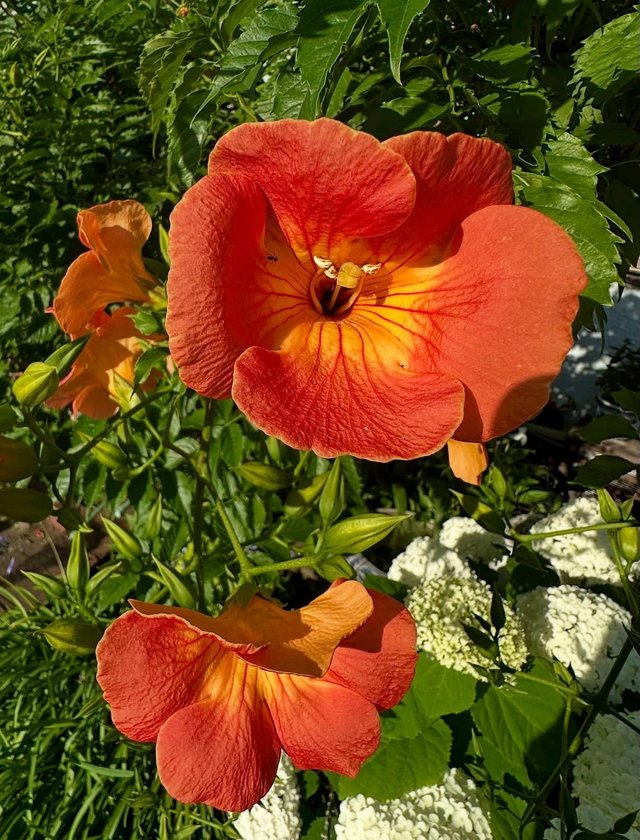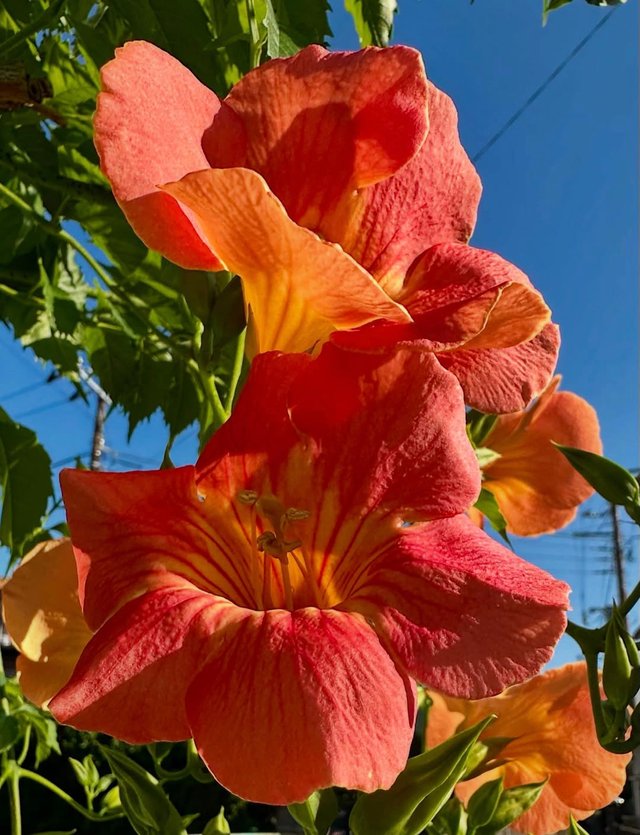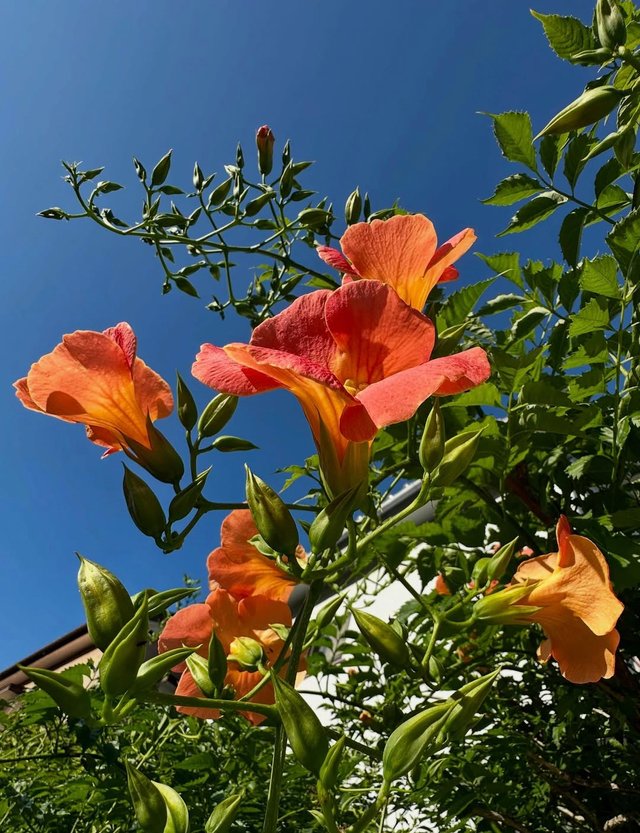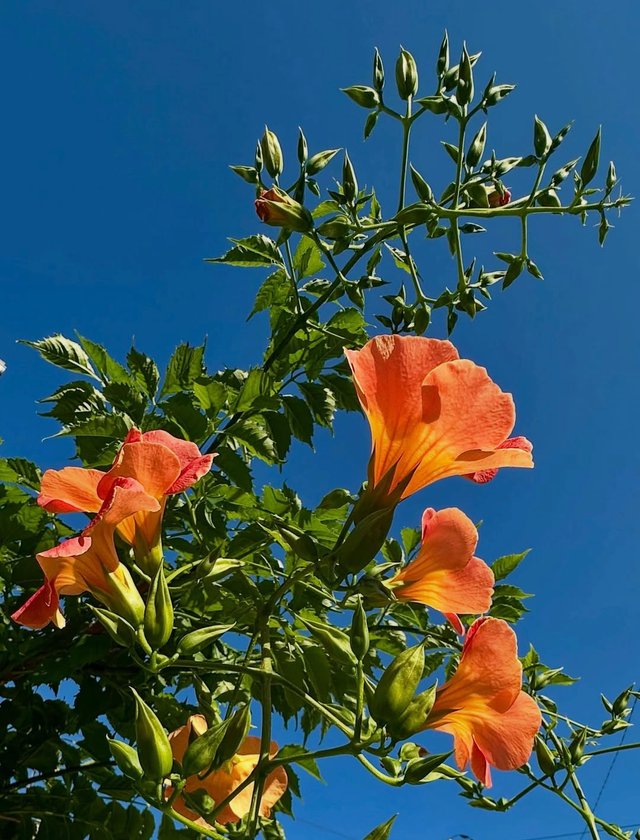Trumpet Vine Flower
The Trumpet vine, also known as Campsis radicans, is one of the most eye-catching and vigorous flowering vines found in gardens, fences, and wild spaces across North America. Named for its large, trumpet-shaped blossoms, this plant offers a fiery burst of color and unmatched vitality, making it both admired and cautiously managed by gardeners.
The trumpet vine is famous for its striking, tubular flowers, which typically bloom in vibrant shades of orange, red, and sometimes yellow. These flowers are about 3–4 inches long and resemble the bell of a trumpet—hence the name. The blooms cluster together in groups at the ends of branches, creating a fiery display that lasts from mid-summer through early fall.The foliage is equally attractive, consisting of pinnate, dark green leaves with serrated edges. These leaves provide a lush, dense backdrop for the brilliant blooms and help the plant form thick cover over arbors, trellises, and fences.
Trumpet vines are pollinator magnets, particularly beloved by hummingbirds, which are naturally drawn to their tubular shape and bright hues. Bees and butterflies also visit these flowers frequently, making trumpet vine a valuable addition to any pollinator-friendly garden. Additionally, the dense growth offers shelter for small birds and insects.This vine is known for its aggressive growth. It can climb up to 30–40 feet or more, using aerial rootlets to cling to surfaces like walls, poles, and trees. In ideal conditions, it grows quickly and can become invasive if not properly managed. Gardeners often need to prune it heavily each year to keep it in check and prevent it from overtaking nearby plants or structures.




